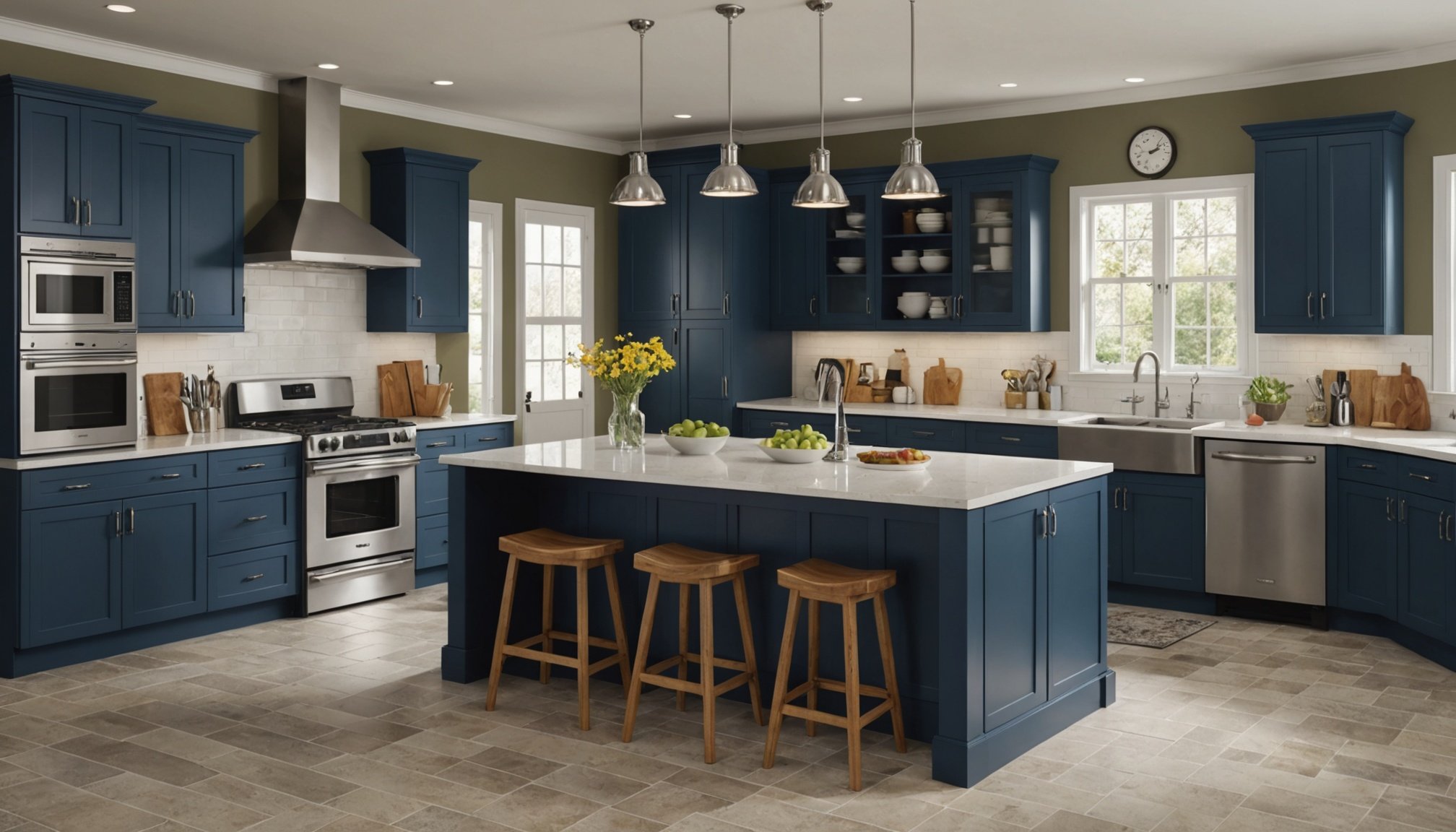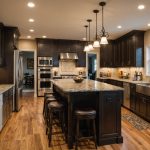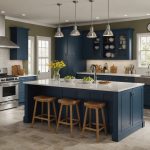Choosing the right colors for your kitchen can significantly influence the mood and ambiance of your space. The psychology of color plays a crucial role in how we perceive and interact with our kitchens. A well-thought-out color scheme can elevate your cooking experience and make your kitchen a warm and inviting place. In this article, we’ll delve into the nuances of selecting the perfect colors for your kitchen, with insights on design, lighting, and the emotional undertone each hue brings.
Understanding the Psychology of Kitchen Colors
When considering a color scheme, understanding the psychological impact of colors on your mood is essential. Colors can evoke emotions, influence behaviors, and even affect how you feel about the space you’re in. Here’s a look at how some popular kitchen colors impact mood:
In parallel : How do I build a kitchen that caters to both cooking and entertaining needs?
1. Green: The Natural Healer
Green is often associated with nature and tranquility. It brings a sense of calm and freshness to the space. In the kitchen, green can create a soothing backdrop that promotes relaxation. Consider incorporating green through wall paint, cabinetry, or even houseplants for a natural and rejuvenating environment.
2. Blue: Cool and Collected
Blue, a color synonymous with calmness and serenity, can make your kitchen feel spacious and open. It’s an ideal choice for smaller kitchens where you want to maximize the perception of space. Shades of blue can be incorporated through tiles, countertops, or subtle accessories. Consider pairing with white or gray to maintain an uncluttered appearance.
In the same genre : What are the pros and cons of open shelving versus closed cabinets in a kitchen?
3. Warm Colors: Inviting and Stimulating
Warm colors like red, orange, and yellow are known for their energizing properties. They can make your kitchen feel cozy and inviting. These colors are great for spaces where you want to foster conversation and warmth, making them perfect for family and social gatherings. Use them in moderation as they can overwhelm when used too liberally.
Creating a Harmonious Color Scheme
Crafting a cohesive color scheme is about more than just picking individual colors. It involves understanding how different shades interact and complement each other. Here’s how you can create a balanced and harmonious design:
1. Start with a Neutral Base
Neutrals like white, beige, and gray serve as excellent backdrops that allow other colors to shine. They provide a clean slate, making it easier to add vibrant or bold accents without overwhelming the senses.
2. Use the 60-30-10 Rule
This classic interior design rule helps maintain a balanced color palette. Use 60% of a dominant color, 30% of a secondary color to add interest, and 10% for an accent color to provide pops of interest.
3. Consider Light and Space
Lighting dramatically affects how colors are perceived. In a kitchen with ample natural light, darker hues work beautifully. Meanwhile, lighter shades are perfect for spaces with limited light, as they can make the kitchen appear larger and more open.
Maximizing Space with Color
A well-thought-out color palette can transform even the smallest kitchens, making them appear more expansive and airy. Here’s how to use color to maximize your kitchen space:
1. Embrace Monochromatic Schemes
Using different shades of the same color can create a seamless and expansive look. This approach minimizes visual breaks and gives the illusion of a larger space.
2. Opt for Light and Bright
Light colors, such as whites, creams, and pastels, reflect light. They make the space feel open and airy, especially when combined with reflective surfaces like glossy countertops or glass tiles.
3. Strategic Color Placement
Painting ceilings or the upper half of walls in lighter colors helps make the space feel taller. Conversely, using darker shades on lower cabinetry or flooring can ground the kitchen and add depth.
Final Considerations for a Welcoming Kitchen
When choosing the perfect colors for your kitchen, there are a few additional considerations to ensure the space is as inviting and functional as possible:
1. Match with Existing Elements
Consider the existing elements in your kitchen, such as cabinets, appliances, and fixtures. Ensure the new color scheme complements rather than clashes with these elements.
2. Add Personal Touches
Incorporate accessories like rugs, curtains, or even tableware in coordinating hues to tie the space together and offer an extra layer of personality.
3. Balance Trends and Timelessness
While it’s tempting to embrace the latest color trends, ensure the choices you make will stand the test of time. Opt for accents that can be easily changed if you want to keep things fresh.
Creating an appealing and functional kitchen is about more than just aesthetics. It’s about crafting a space that makes you feel good every time you step into it.
Choosing the right color for your kitchen is a blend of understanding psychology, design, and personal preference. The colors you choose should reflect the mood you wish to convey, whether it’s the calmness of blue, the inviting warmth of reds and oranges, or the refreshing nature of green. By considering factors like space, lighting, and cabinets, you can create a harmonious and welcoming kitchen that becomes the heart of your home. Add a personal touch, and you’ll find your kitchen will not only serve as a functional space but also one that enhances your daily life.











